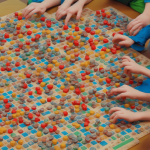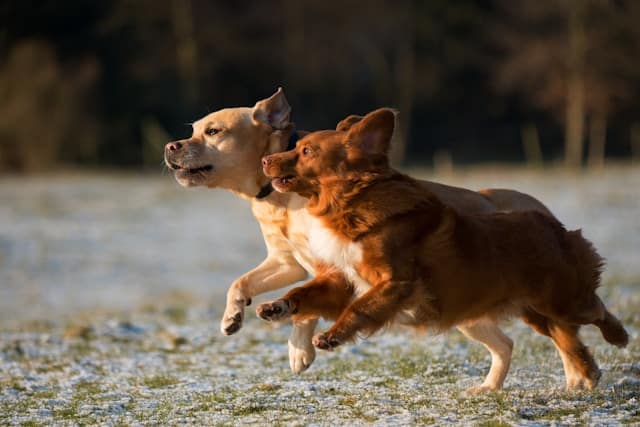When it comes to man’s best friend, there’s nothing more important than ensuring their happiness and wellbeing. If you’re the proud owner of an energetic dog, one of the best things you can do for your pet is to set up an outdoor dog run in your backyard or any available outdoor space. Outdoor dog runs, also known as kennels, offer your pet a safe space to play, exercise, and simply enjoy the great outdoors. Choosing the perfect location and setup for a dog run may seem intimidating, but we are here to assist you. By considering your dog’s needs, the area of your yard, and the type of turf, you’ll create an outdoor haven for your canine companion.
Choosing the Best Location for a Dog Run
Selecting the perfect spot for your dog run involves a lot more than simply pointing at an area in your yard. There are several factors you’ll need to consider to ensure your pet’s comfort and safety.
A lire en complément : How to Ensure the Emotional Well-being of Pets During Long-Term Boarding?
First, consider the size of your dog. Larger dogs require more space to move around freely, while smaller dogs can manage in more compact areas. Additionally, you should think about the amount of time your dog will spend in the run. If your pet will be spending extended periods outdoors, you’ll want to choose a location with some shade to protect them from the sun.
It’s also important to choose a location that’s relatively flat. Sloped areas can lead to erosion or pooling water, which can turn your outdoor dog run into a muddy mess. Finally, consider the view. Your dog will appreciate a location that allows them to keep an eye on the house or the street, as this can help alleviate feelings of loneliness or boredom.
Sujet a lire : How to Ensure Proper Nutrition for Pets on Specialized Diets?
Choosing the Best Setup for a Dog Run
Having decided on the perfect spot, it’s time to think about the actual setup of your dog run. A crucial factor to consider is the fencing. Typical choices include chain-link, wood, or vinyl fencing. Chain-link fencing is popular due to its durability and affordability, but it might not be the best choice if your dog is a climber.
Also, consider the height of the fence. It should be tall enough to prevent your dog from jumping over it. A good rule of thumb is to choose a fence that is at least 2 feet taller than your dog’s maximum jump height.
The gate should be sturdy and secure, with latches that can’t be easily opened by an excited dog. Some owners also choose to include a roof or cover on their dog run as an added layer of protection against predators and harsh weather.
Choosing the Best Surface for a Dog Run
When it comes to the surface of your dog run, you’ve got several options: grass, artificial turf, concrete, or a mix of these.
Grass is the most natural choice and can be a comfortable surface for your pet to play on. However, it requires regular maintenance and can quickly turn into mud in rainy weather. Artificial turf can be a good alternative to grass. It’s easy to clean, doesn’t turn into mud, and can be more durable.
Concrete is another viable choice, especially for larger dogs or those who love to dig. It’s durable, easy to clean, and doesn’t require the maintenance of grass. However, concrete can be hard on your dog’s joints, so consider adding a layer of bedding or rubber mats for extra comfort.
Extras to Consider for Your Dog Run
Once you’ve chosen your location, setup, and surface, there are a few extras to consider that can make your dog run go from good to great.
Consider adding some toys or play equipment to keep your dog entertained. This could be anything from a simple ball to more elaborate dog agility equipment. If your dog will be spending a lot of time in the kennel, consider adding a dog house for shelter and a place to rest.
Water is another essential. Ensure there’s always clean, fresh water available for your pet. You can opt for a simple water bowl or consider a dog water fountain that provides a constant stream of fresh water.
Checking Local Regulations and Getting Approval
Before you start setting up your outdoor dog run, it’s essential to check any local regulations or bylaws that might apply to your project. Some areas have restrictions on the size, location, and type of outdoor pet structures.
Additionally, if you live in a community with a homeowners association, you may need to obtain approval before setting up your dog run. Always check these details in advance to avoid potential issues down the line.
An outdoor dog run can be a fantastic addition to your home, providing your pet with the perfect outdoor space to play, explore, and relax. By carefully considering the location, setup, and surface, you can create a kennel that not only meets your pet’s needs but also enhances your backyard.
Incorporating Ground Cover for Additional Comfort
Deciding on the ideal ground cover for your dog run is crucial to your pet’s comfort and safety. One common option is natural grass, which most dogs love because it’s soft and keeps the area cool in hot weather. Grass also adds a beautiful aesthetic to your yard, but it can be high-maintenance, requiring constant watering, mowing, and fertilization.
Another popular choice is artificial turf, commonly known as artificial grass. This surface is excellent for dogs who love to dig or for those living in areas with poor soil or extreme weather, since it is durable and requires less care. Artificial turf doesn’t develop muddy patches in the rain, and it doesn’t attract pests. However, it can become hot in the summer, so shade or sprinklers may be necessary to keep it cool.
Wood chips can also be a great option for a dog run ground cover. They’re gentle on your dog’s paws and won’t turn muddy in the rain. However, be sure to choose non-toxic types of wood, as some dogs might try to chew on the chips.
Whichever option you choose, make sure it is comfortable for your dog and practical for your pet care routine.
Ensuring Regular Maintenance for a Healthy Outdoor Kennel
In maintaining your dog run, regular cleaning is vital. Regardless of the ground cover you choose, you should clean the dog run at least once a week to eliminate odors, prevent the growth of bacteria, and keep your pet healthy.
If you choose natural grass, remember to water and mow it regularly to keep it green and lush. For artificial turf, rinse with water regularly to wash away any urine or fecal matter. For wood chips, replace them periodically to prevent them from harboring bacteria or becoming a breeding ground for pests.
Beyond cleaning, also regularly check the fence for any damage or potential escape routes. Look for holes, weak spots, or areas where your dog might be able to climb. Repair any issues promptly to keep the run secure.
Conclusion
Creating the perfect outdoor dog run for your pet takes planning, work, and regular maintenance, but the reward is certainly worth the effort. A well-designed and maintained dog run provides a safe and exciting place for your pet to play, exercise, and relax. It’s much more than just a backyard dog kennel—it’s a special place designed with love and care, specifically for your dog’s happiness and wellbeing. So whether you’re considering the perfect ground cover, weighing the pros and cons of natural grass versus artificial turf, or exploring different dog run ideas, remember: the best dog run is one that caters to your dog’s unique needs and personality.











